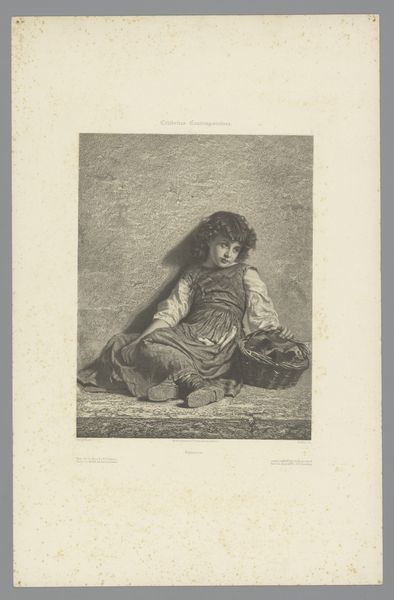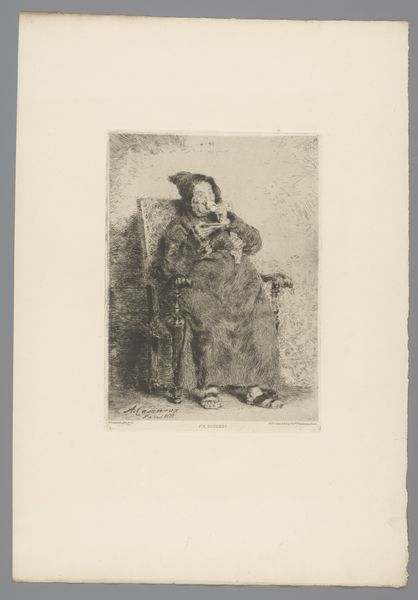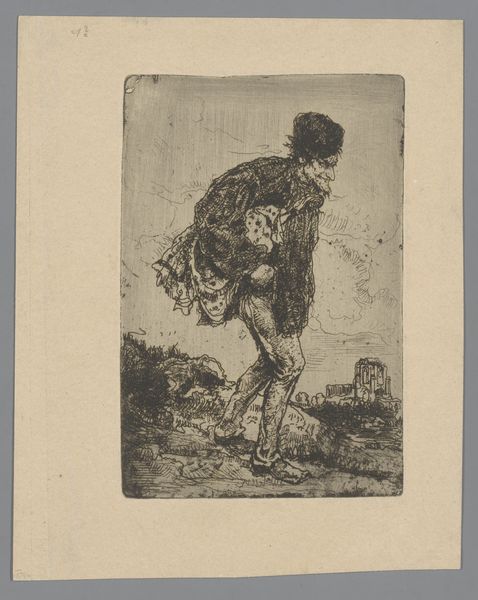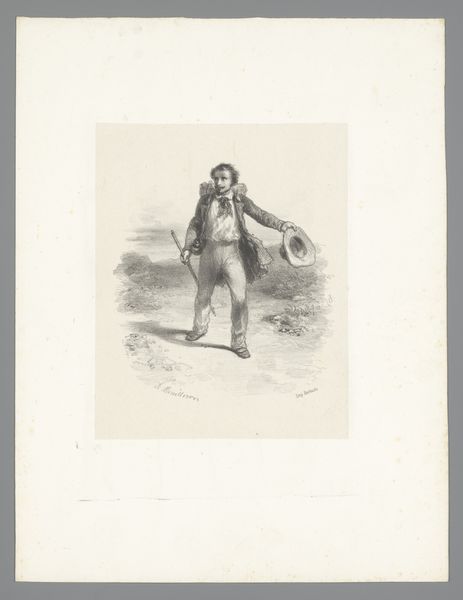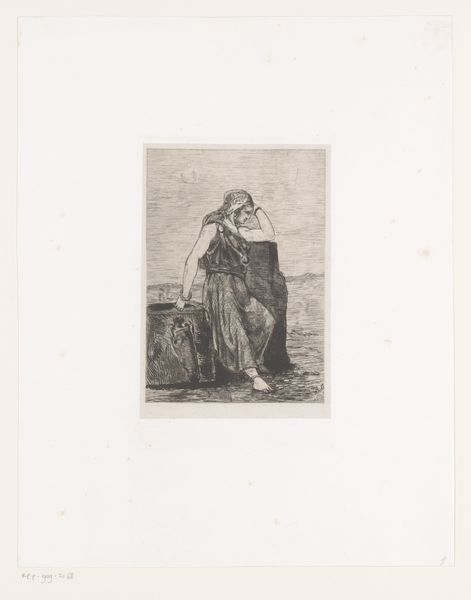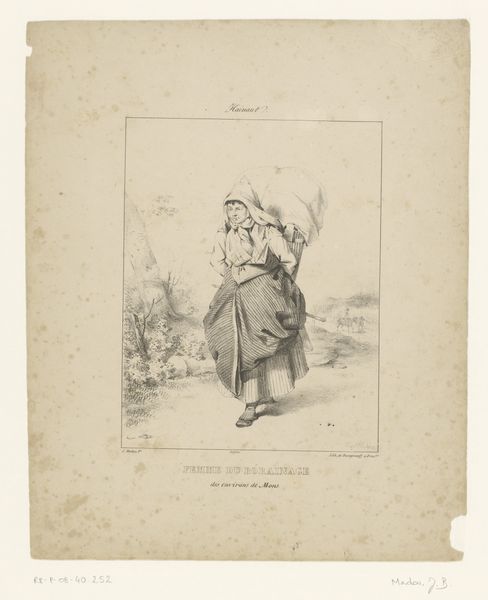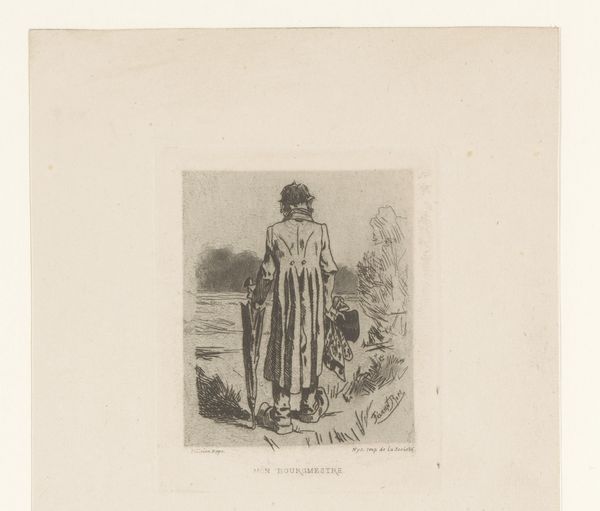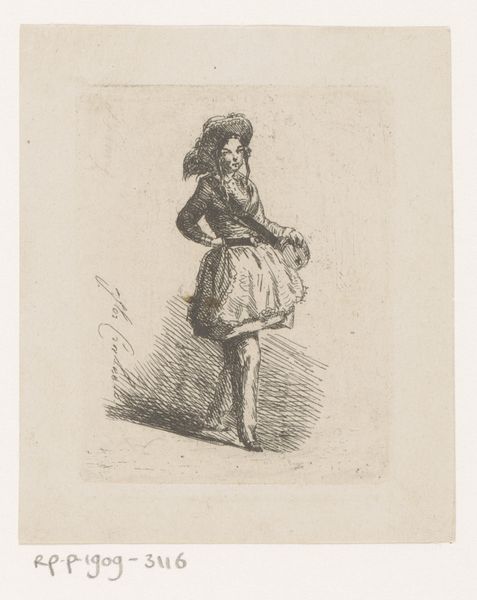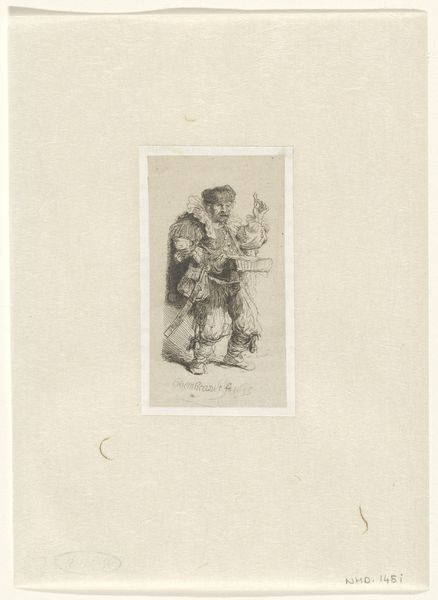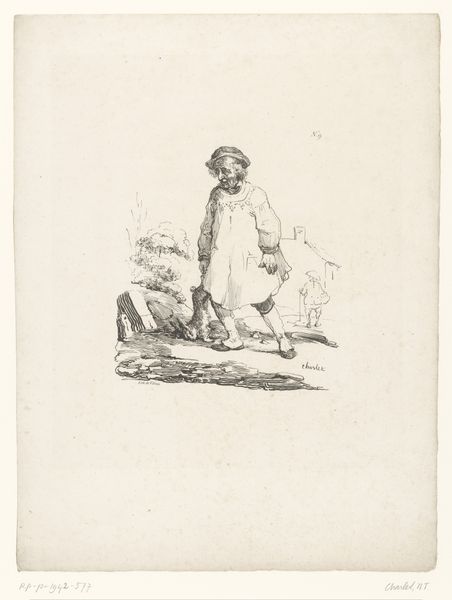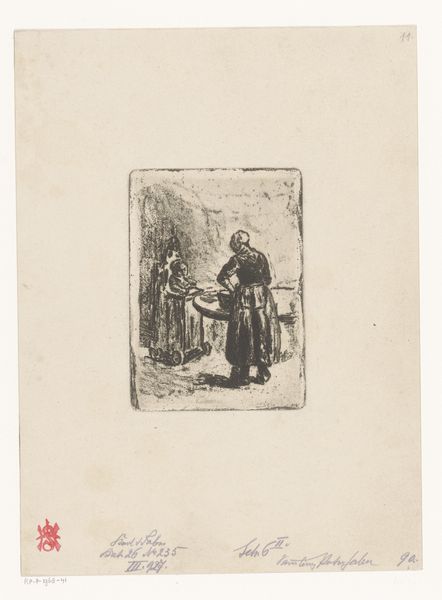
drawing, print, etching, pencil
#
portrait
#
pencil drawn
#
drawing
# print
#
etching
#
pencil sketch
#
charcoal drawing
#
pencil drawing
#
pencil
#
pencil work
#
genre-painting
#
realism
Dimensions: height 130 mm, width 95 mm
Copyright: Rijks Museum: Open Domain
Editor: This etching from 1847, titled *Flemish Beggar with Walking Stick*, by Van den Kerckhoven, depicts a figure, presumably a beggar, and it feels very much rooted in its time. What story do you see being told here, and how does it fit into the social narrative of the period? Curator: Well, this piece places itself squarely within the Realist movement. Van den Kerckhoven presents us not with idealized forms or romanticized poverty, but an unvarnished depiction of a beggar. The socio-political context of the 1840s in Europe, rife with economic hardship and social unrest, shaped this kind of imagery. What do you make of the figure's placement in the composition, and the inclusion of a second, smaller figure? Editor: It’s interesting. The beggar is centered, dominating the composition, while the other figure seems almost like an afterthought. Could this relate to how society viewed and perhaps dismissed those on the margins? Curator: Precisely. Consider also the medium itself, etching. Prints like these had a wider circulation than paintings. So, images of the less fortunate became more visible to the public. How do you think the consumption of such images affected social consciousness? Editor: Maybe it served to normalize poverty, or perhaps, for some viewers, it sparked a sense of empathy, or even guilt. Were these images often used to advocate for social change? Curator: Sometimes, yes. Genre paintings depicting poverty often became part of a broader visual discourse around social reform, raising questions about institutional responsibility and individual agency. Look closely at the figure’s clothing and the landscape; does it read as critique or detached observation? Editor: I see both. There’s a clinical quality in the line work, yet the subject's worn clothes speak of genuine hardship. This has given me a lot to consider regarding the complex relationship between art and social commentary. Curator: Indeed, it underscores how artistic choices reflect and shape social perceptions, demonstrating that this artwork acts as both a historical document and an instigator for discourse.
Comments
No comments
Be the first to comment and join the conversation on the ultimate creative platform.

